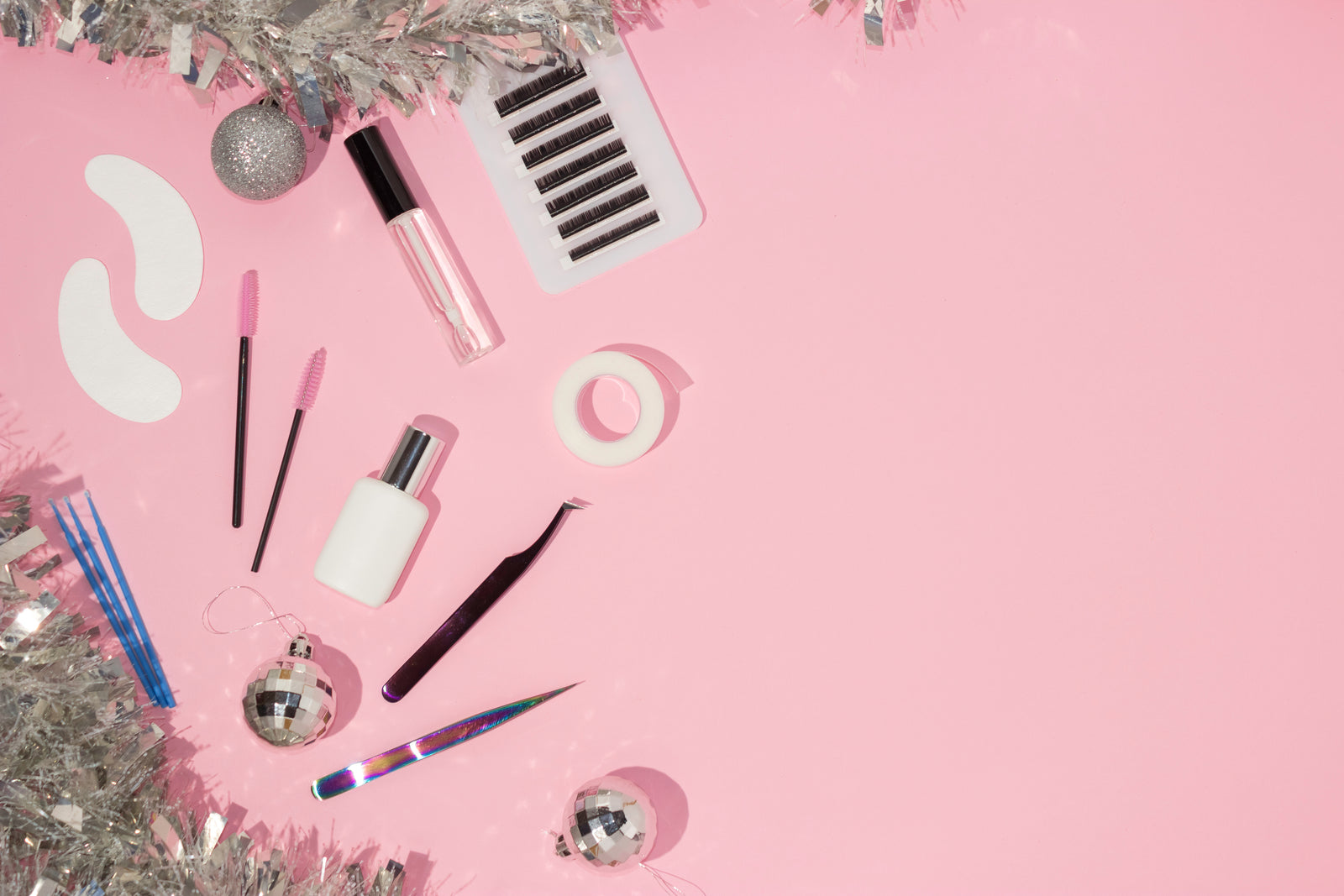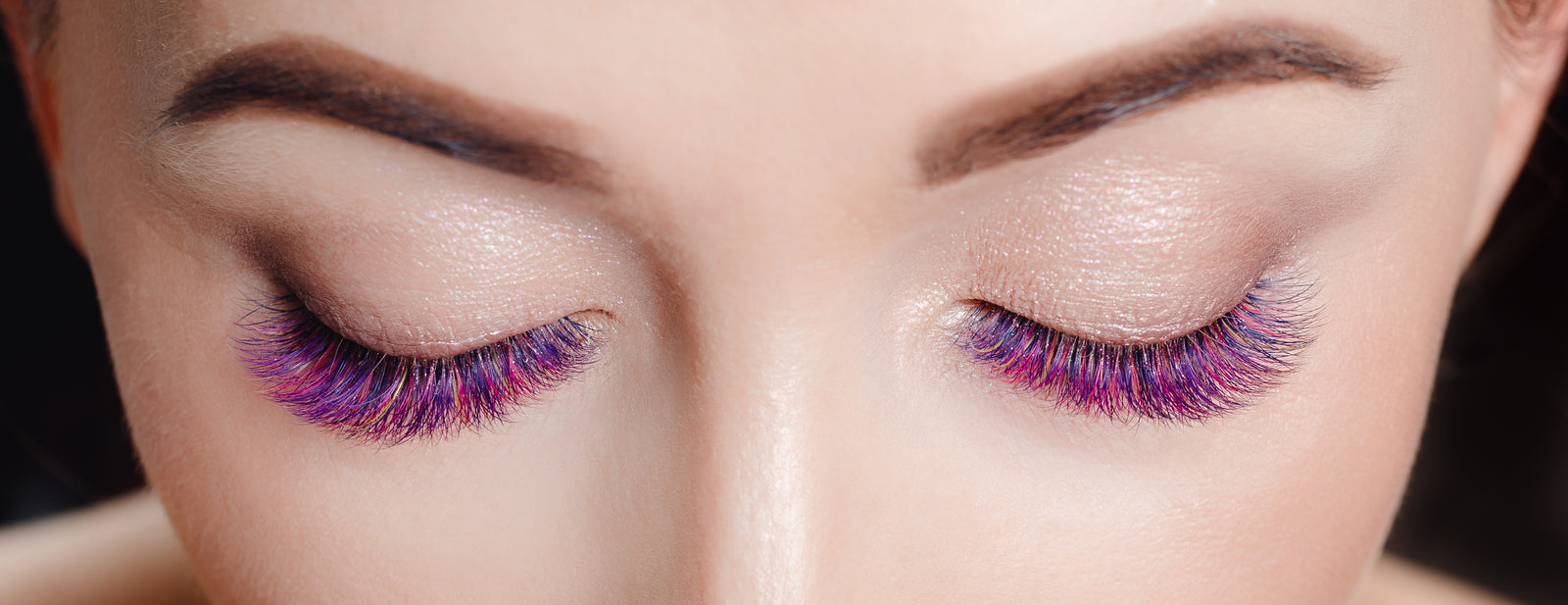Your Cart is Empty
Get 15% off discount with LYONLASH15 | Purchase 3 items to get 10% off with BUNDLE3
Get 15% off discount with LYONLASH15 | Purchase 3 items to get 10% off with BUNDLE3
Get 15% off discount with LYONLASH15 | Purchase 3 items to get 10% off with BUNDLE3
Get 15% off discount with LYONLASH15 | Purchase 3 items to get 10% off with BUNDLE3
September 02, 2021 5 min read

How to Deal with Lash Adhesive Allergic Reactions
There’s a famous line that says, “Beauty comes with a price.” We always think that price is monetary, but if you’re not careful, it could be irritation or allergy! We don’t want that. Good thing that it doesn’t happen a lot, but when it does, we want to be able to distinguish what we’re experiencing…and what to do when it does!
If you’ve been constantly getting lash extensions or planning to do it for the first time, then you should do your research regarding the possibilities that you need to consider. But how do you know if what you’re going through is a mere irritation or already an allergic reaction?
ALLERGIC REACTION VS IRRITATION
An allergy is a hypersensitive response of the immune system to an allergen which can cause different reactions. The allergen may be from the adhesive, or some ingredients found in the lash products.
However, while there are clients allergic to the carbon black or other cyanoacrylate, these cases are extremely rare. You don’t have to worry, too, because if you do find out your allergic to carbon block, you can always opt for clear lash glue. There are also other clients who have latex allergy which highlights the importance of making sure the products used on them are latex-free.
Some allergic reactions to glue for eyelash extensions may include red puffy or swollen eyes and/or itchiness. These may not appear immediately, but can gradually show up in about three days before you start noticing it. If you start experiencing these symptoms, chances are they’re going to last for as long as there is some adhesive residue left on your eye. It could also worsen when your eyes continue to be exposed to the same kind of allergen.
If you feel like you’re experiencing some allergic reactions to glue for eyelash extensions, make sure to notify your lash artist to arrange a lash removal session as soon as possible, and apply cold compress to soothe the area… and if it doesn’t improve the situation, consider consulting a doctor.
It can get difficult to distinguish irritation as opposed to an allergic reaction because most often than not, the two manifest the same kind of symptoms. How do you figure out which one of the two you’re experiencing?
It’s pretty simple. As another famous line goes, “Only time can tell.” Yes, indeed. While an irritation goes away over time, allergic reaction worsens over the same period.
Gas molecules of cyanoacrylate may cause itchiness, red puffy eyes, and can even affect the inside of your eyes causing them to become red and irritated. If these symptoms don’t go away after 24 hours, then perhaps it’s an allergic reaction which could get worse if you leave it alone. If it goes away easily, then perhaps it was just a minor irritation.
One thing you should do if you’re someone who experiences seasonal allergies is to inform your lash artist ahead of time so they can take extra measures to make sure that the products they use on you will have no reactions.
Seasonal allergies can magnify, and can contribute to your symptoms. Make sure that while your lash artist is putting on your extensions, the under-eye gel pads are not moving around. Otherwise, it can touch the sclera of the eye which may cause some irritation and soreness through contact.
LASH EXTENSION GLUE ALLERGY PREVENTION
Thankfully if you’re someone who’s had allergic reactions to lash extension adhesive, you’re lucky to be in a generation where there are so many alternatives like anti-allergy gel. This has been found to effectively prevent the development of allergic reactions to glue for eyelash extensions.
Placing an open jar of anti-allergy gel absorbs the fumes as well as the cyanoacrylate before it reaches the eyes and nostrils which generally triggers the whole allergic reaction or irritation experience.
Just leave it open during the application process, and make sure that it sits near your glue plate. Every lash station must have one jar! An anti-allergy gel is the perfect solution for curing the adhesive, maintaining the air, and protecting you and the lash artist from any possible reactions.
HOW TO DEAL WITH SENSITIVE CLIENTS
If you’re a lash artist who has been in the industry for a while, chances are you’ve had the opportunity to deal with many clients already and especially the ones who have developed allergic reactions to glue for eyelash extensions. When the adhesive is still in its liquid state, that’s when the client who is a bit more on the sensitive side will manifest the most reactions.
It’s important that before you start the lash service, you initially do a patch test using a clear adhesive on one eye and a black adhesive on the other to avoid for any eye irritation after eyelash extensions. As mentioned, most clients can be most sensitive to cyanoacrylate which is the main ingredient for lash extension adhesive.
To help avoid any allergic reaction to glue for eyelash extensions or even minor irritations, make sure the products are hypoallergenic, chemical, and latex-free! There are more ingredients to safe natural glue you should look out for since allergies can show up anytime with no warning so perhaps this is a step that you should always hold in importance.
The sensitivity to these allergens can range from mild to severe, and it will really depend on the client.
Here is a list of things that you can do to make sure the allergic reactions will be under your complete control:
One thing that lash artists can do on their end is to use only minimal adhesive during application. As you put more adhesive to the eye, the chances of allergic reactions also increase alongside. Ask your lash artist to use products such as hypoallergenic eyelash extensions glue or products that contain the least of these allergens: chemicals, latex, or formaldehyde.
It is suggested that adding moisture through a nebuliser/nano-mister can help cure the outer layer of the adhesive which will lessen the time of exposure of the client to the adhesive in its liquid state. Make sure that you constantly add moisture throughout the lash service, and more importantly, to fan and dry the lash before misting it!
2. Stay patient, and keep them closed!
It does get hard to keep those eyes closed the whole application process, but it’s really important that you do because any slight opening can cause fumes and vapors to enter the eyes which can cause allergic reactions or irritation. Make sure to tape or use an eye pad on the lid to add weight and secure the eyes better.
3. Lash service first aid!
If you’re aware that you’ll get reactions, you can go ahead and ask for your doctor’s approval to take antihistamine for any symptoms that might occur. This way you can help minimise reactions to the allergens. You can also use anti-allergy gel for eyelash extension allergy as part of your aftercare lash process!
The good thing is that there are so many products now that are designed for sensitive clients. More than using anti-allergy gel, clients can opt for lash glue with the lowest amount of cyanoacrylate which is suitable to their sensitivity, and will definitely keep any eye irritation at bay.

June 15, 2023 4 min read
Read More
June 08, 2023 3 min read
Read More
June 01, 2023 4 min read
Read MoreBe the first to know about new launch and early bird access to Promotions and Giveaway !